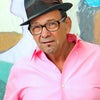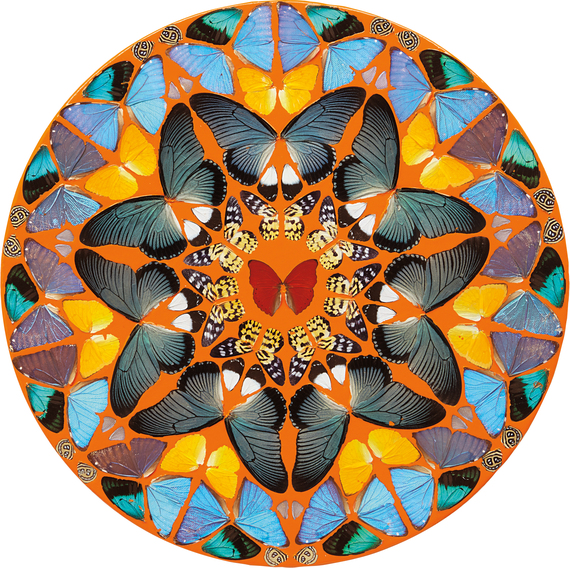
Damien Hirst, Psalm 23: Dominus Regit 3, 2008, Butterflies, household glass on canvas, 18 in. diameter (45.7 cm). Courtesy SmithDavidson. (Amsterdam): Smith-Davidson
For Manhattanites who dig into the Big Apple and stay put all winter, the first signs of spring, especially after months of snow-covered streets, are cause for celebration. The tulips have sprouted now on Park Avenue as a subtle reminder of the original Dutch explorers who settled the island in the mid-sixteenth century, which later became one of the busiest ports in the world. When the flowers finally push through the ground in Central Park butterflies miraculously appear, flapping their colorful wings as they begin their search for nectar. I'm reminded of the very first cover of The New Yorker (February 21, 1925), which depicted a snooty gentleman in a top hat, who became known as Eustace Tilley, bending slightly with his monocle in hand as he peered at a common insect mid-flight, not exactly sure what it was.
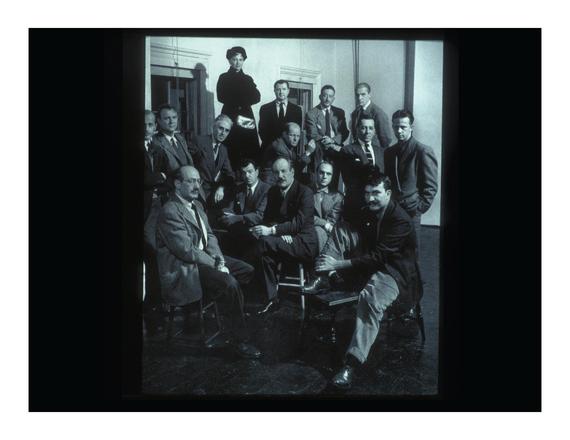
Group portrait of The New York School artists known as "The Irascibles," including Stamos, Rothko, Baziotes, Pollock, Motherwell, de Kooning and Sterne.
By 1930, artists were drifting into New York in large numbers, including Willem de Kooning as a stowaway, coincidentally also from Holland, who, together with his other comrades that later became rich and famous, formed the New York School, which is synonymous with abstract expressionist painting. A few decades later, fueled by their adventuresome spirit and revolutionary approaches to contemporary art, New York City permanently replaced Paris as the capital of the art world.
Following the seasonal arrival of blooming Dutch tulips and the Lepidoptera is the mighty Art New York, positioned on Pier 94 (originally built by the Dutch Trading Company) and bringing to town with it a unique showcase of works by artists from fifty countries. Executive Vice President Nick Korniloff of Art Miami said, "Not only will these fairs display an unprecedented selection of works from around the world, but will also include programs by internationally known curators, informative interactive booths, and discussion panels featuring prominent art influencers."
The heart and soul of a great art fair is, of course, the works on display, and accordingly, here is a list of some of my previewed personal favorites in no particular order as space permits:

Saul Steinberg, Easel & Palette, 1987, Mixed media on wood, 21 x 16 x 2 in. Courtesy Vallarino Fine Art.
Saul Steinberg was an American cartoonist and illustrator, best known for his work in The New Yorker, most notably View of the World from 9th Avenue (looking west all the way to China), where in characteristic stereotypical style, the rest of the world, somewhere out there, didn't really seem that important. His first cartoon appeared in The New Yorker in 1941, and by well over a half century later, the artist had created 87 iconic covers that usually crossed over the line from commercial to fine art. In Easel & Palette, Steinberg's genius for drawing simple but wonderful compositions with a cubist edge and often portraying a few tools of the trade, like brushes or a ruler accompanied by an artist's palette, shows a distant connection with Braque and Picasso.
Vallarino Fine Art (New York): http://vallarinofineart.com

Robert R. Zakanitch, The Moon Glinted Over the Clouds, 2015, Gouache on paper, 18 x 23 ¾ in. Courtesy Nancy Hoffman Gallery.
Robert R. Zakanitch is an American painter and New Yorker who was one of the founders of the Pattern & Decoration movement. In the late 1960s, he was experimenting with color field painting when he began to realize that deliberate repeat patterns of bright colors in flowers and fauna could be both manipulated into unique dazzling compositions and purposefully decorative with the use of stencils at the same time, making them provocatively beautiful. My book, "Learning to See--An Artist's View on Contemporary Artists from Artschwager to Zakanitch" (StarGroup Publishing, 2008), brings to mind the last line in my review of his work: "Zakanitch proves without a shadow of a doubt that he literally can turn any subject into a new light with another proportion and still retain the romance and alluring delight acquired from inventive repetition."
Nancy Hoffman Gallery (New York): http://www.nancyhoffmangallery.com/
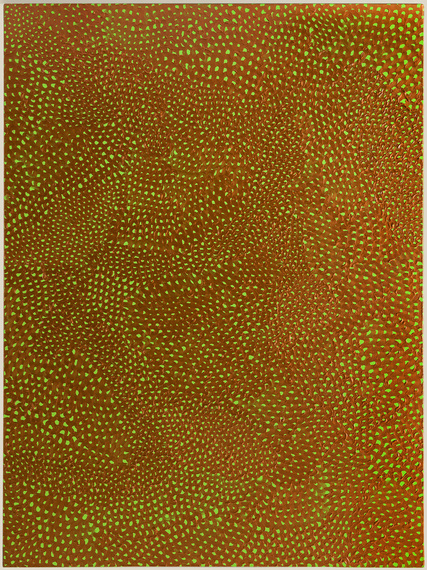
Yayoi Kusama, Nets - Infinity (OPQA), 2004, Acrylic on canvas, 51.3 x 38.2 in. (130.3 x 97 cm). Courtesy Galerie von Vertes.
Yayoi Kusama's penetrating canvases often incorporate painterly spots and dots that taken as a whole seem to gravitate together like a pattern of birds about to take off in flight. The dots are used in a magical way, creating a flowing illusion both in her two-dimensional work and imaginative sculpture. Her memorable mirrored room at the Whitney Museum displaying thousands of reflective lights seemed to go on into eternity. A precursor of the pop art, minimalist and feminist art movements, Kusama influenced contemporaries such as Warhol and Oldenburg, and is now acknowledged as one of the most important living artists to come out of Japan; she remains an important voice of the avant-garde.
Galerie von Vertes (Zürich): http://www.vonvertes.com/
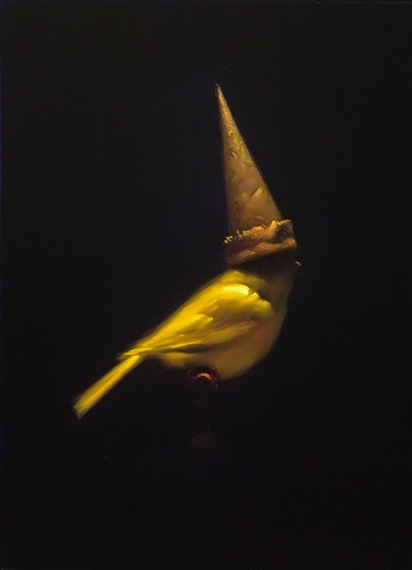
Stephen Appleby-Barr, Fenris Lunaire, 2016, Oil on linen, 22 x 16 in. Courtesy Nicholas Metivier Gallery.
Stephen Appleby-Barr takes classical portraiture and adds bizarre twists, such as cat heads to human bodies, as well as mysterious masked creatures and provocative still-lifes. His expressive brushwork is reminiscent of esteemed seventeenth and eighteenth-century painters like Velazquez, Rembrandt and Goya. Often his work feels timeless and traditional, as the fresh paint gets twisted together with a sense of playfulness and thoughtful fun. This is masterful brushwork at its best, and the image pictured here, simple and direct, is a prime example of its elegance.
Nicholas Metivier Gallery (Toronto): http://metiviergallery.com/
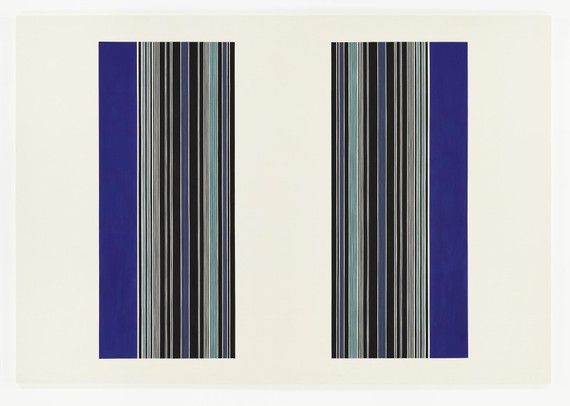
Gene Davis, Untitled, 1985, Acrylic on canvas, 115 ½ x 168 (293.4 x 426.7 cm). Courtesy Mark Borghi Fine Art.
Gene Davis is a highly respected and influential artist who was born in Washington, D.C. and lived there nearly all his life. Davis was a central figure of the Washington Color School, whose members became the most prominent of the mid-century color field painters. Davis is best known for his acrylic paintings of multi-hued vertical stripes, and this work from the mid-1980s is an excellent example of his refined touch.
Mark Borghi Fine Art (Palm Beach and New York): http://borghi.org/
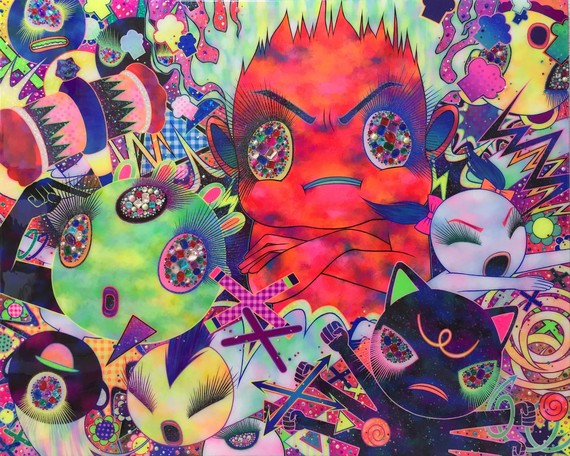
Yuina Wada, PunPun, 2015, Mixed media on canvas mounted on wood, 60 x 75 cm. Courtesy Gallery Delaive.
Yuina Wada is a gifted artist who celebrates the fusion between energetic and gem-emblazoned cartoon figures who have a distant relationship to the Chicago Imagist School, which included the infamous Hairy Who Group, and the idiosyncratic, recognizable thumbprint of Japanese contemporary imagery. In these jam-packed compositions characters pleasantly clash, as a whirlwind of shapes and textures shake things up.
Gallery Delaive (Amsterdam): http://www.delaive.com/index.php
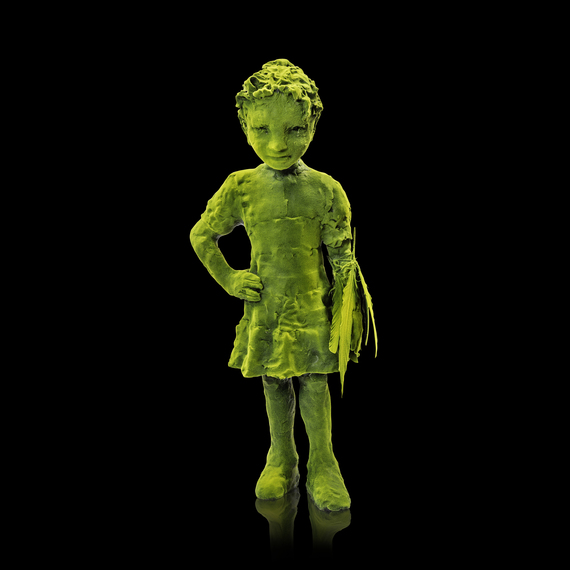
Kim Simonsson, Voodoo Moss Girl, 2015, Ceramic, feathers, nylon fibers, 31.89 x 15.35 x 12.2 in. (81 x 39 x 31 cm) unique. Courtesy Galerie Forsblom.
Kim Simonsson presents a strangely beautiful line-up of ceramic figures, complete with matching moss green feathers that could have been imported from another planet. By creatively manipulating the hand-built surfaces of his sculptures, Simonsson produces separate gestural personalities that are derived from the identical clay chromosomes that all seem to speak the same celestial language.
Galerie Forsblom (Helsinki): http://www.galerieforsblom.com/
In addition to these favorite picks, which represent about one percent of what's on view at Art New York, here is a quick look at some of the artists, some of whom belong to the New York School, who are listed below without commentary by recognizable last names from A to Z:
Andre, Baechler, Bailey, Basquiat, Bearden, Bleckner, Boxer, Butterfield, Calder, Caro, Cavallon, Chadwick, Chagall, Chamberlain, Christensen, Condo, de Kooning, Dzubas, Flack, Francis, Gormley, Halley, Haring, Indiana, Kahn, Katz, Lichtenstein, Muniz, Nerdrum, Picasso, Rauschenberg, Ruscha, Serra, Stamos, Sultan, Venet, Warhol, Wesselmann, Xuan, Yuskavage and Zakanitch, to top it off.
Art New York opens with an afternoon VIP event on Tuesday, May 3, 2-5pm, and runs through May 8. For more information on Art New York: http://www.artnyfair.com/
